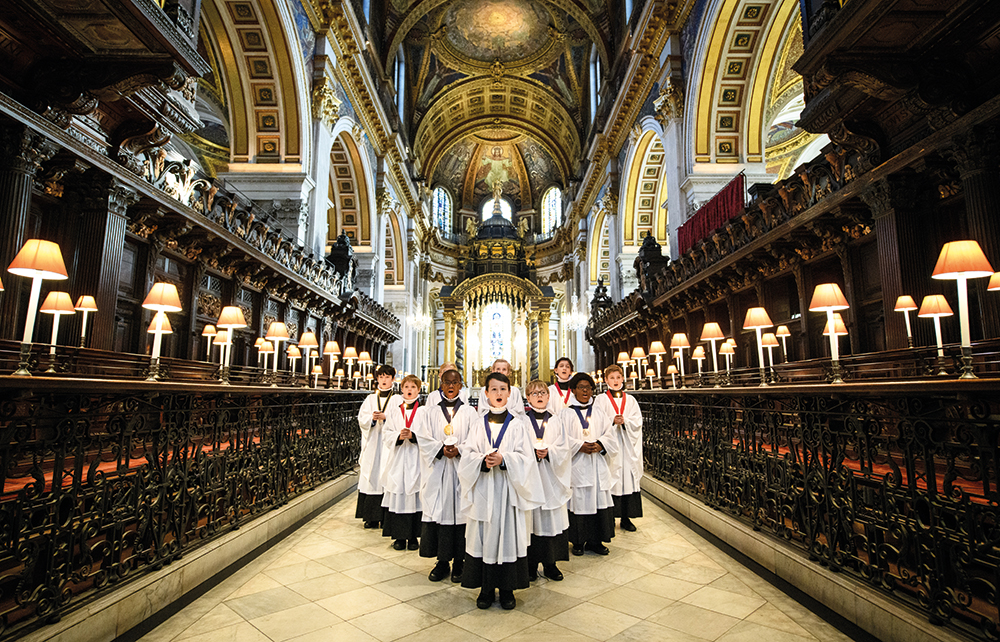There’s worrying news for all who care about the incomparable cultural phenomenon that is the singing of choral evensong in British cathedrals every day of the week. Canterbury cathedral announced in March that it’s cutting ties with its local independent choir school, St Edmund’s, ending a happy relationship that has lasted for 50 years. St Edmund’s was only informed about the end of the contract a few days before the public announcement.
If these small powerhouses of excellence are lost, the nation will be culturally the poorer for it
From now on, Canterbury’s choristers will be drawn from any and all local schools, and they will sing just three services each per week. A child will still be able to go to St Edmund’s and be a chorister, but the cathedral will no longer (after the current cohort leaves) stump up the money to subsidise the fees in return for the child’s five years of musical contribution.
Will other cathedrals with instinctively anti-independent-school deans and chapters follow suit, in belt-tightening measures dressed up as ‘inclusivity’?
The cathedral was clever at spinning its announcement to make it sound virtuous and inclusive. They were ‘committing themselves to progressing equality’, they stated, as they announced that choristers will be allowed to ‘study at any institution’, with ‘compulsory boarding no longer a requirement’. The money the cathedral saves by ceasing to subsidise chorister school fees (i.e. no longer reimbursing families for their children’s hard work) will, they insist, be ‘ring-fenced to support community music projects’.
Those of us who care will watch carefully to see what the cathedral actually does with that ‘ring-fenced’ money. The drawing of primary school-aged boys and teenaged girls from a variety of local schools sounds attractive, but will it work in practice? What if they’re needed for a special service in the middle of a weekday, such as for a suddenly dead archbishop? It could be a nightmare to organise – emails going out to different heads, some of whom might not play ball. And what if a mother wants to take her chorister child away over Christmas? How will the cathedral dare to stop her if it’s getting the child’s musical contribution for free? The same happened with Lincoln cathedral recently, and I hear it’s far from easy to maintain the necessary musical standards.
Cathedrals who go down this route are in danger of becoming takers rather than givers, raking in children’s musical contributions free of charge, just as they rake in the freely given help of armies of adult volunteers. They’re strapped for cash, after the pandemic halted paying tourists – one can see that the temptation to slash the expense of the music is strong, but this is not a good look.
I’ve been on the telephone to choir school heads and directors of music across the country, and am tentatively relieved to hear that other cathedrals, such as Salisbury, York, Truro, Chichester and Wells, still generously subsidise choristers’ school fees at their attached independent choir schools, some taking just 25 per cent off the fees, some 50, some 100 per cent. The money off is ‘a recognition of the effort and work given’, says Alastair Tighe, headmaster of Wells cathedral School. With the cathedrals’ help, all these superb, music-oriented schools offer means-tested bursaries, so that any local child who succeeds in the audition and entrance test should be able to go there.
It is not true that it’s hard for children of ethnic minorities to join such institutions. There was an ignorant quote in the Times in March, about a Catholic choral initiative in Leeds: ‘It’s not like Westminster Abbey choir… we have people from every race.’ They hadn’t checked the facts. Westminster Abbey Choir does have children from ethnic minorities, as do all cathedral choirs. (Westminster Abbey Choir School happens to be a uniquely tiny gem, consisting only of boarding choristers, who live and breathe Anglican choral music.)
When this two-way system works – the children giving their very best and creating daily world-class excellence, the cathedral subsidising – a wonderful thing happens. The aura of excellence that springs from the choristers spreads across the entire school (of which usually only a fraction is choristers), raising standards and aspirations all round. ‘We have 80 children in our school orchestra,’ says Holly Craven, director of music at St Peter’s in York, to which all the choristers go, ‘plus two choirs for non-choristers’. It was a worrying moment when York’s Minster School (for choristers) closed in 2020, but the decision to move the choristers to St Peter’s has worked well. ‘There’s a vibrancy to the musical life of the school,’ says Andy Johnson, head of Truro School, to which Truro cathedral’s choristers go. ‘The choristers are one part of the icing on that cake. Every week we have 300 individual music lessons going on across the school.’
If these small powerhouses of excellence are lost, because fees go up so steeply that cathedrals can no longer afford to subsidise their choristers (choir schools are hoping they might be exempt from the dreaded VAT as they’ll be classed as ‘specialist music schools’), the nation will be culturally the poorer for it. The state-school model can work well, such as in Peterborough, where cathedral choristers attend the King’s (the Cathedral) School, a mixed comprehensive of 1,275 pupils, rehearsing every day from 8 to 9 a.m. and being bussed to the cathedral after school. But at least they all go to the same school.
Oxford and Cambridge colleges have a similar arrangement of subsidising fees for their choristers and this creates beacons of excellence there, too. ‘A prep school with a world-class choir’ is how its headmaster Mathew Jenkinson describes New College School in Oxford. Exactly. World-class. Cathedrals and colleges must be careful to treasure this fragile arrangement.






Comments